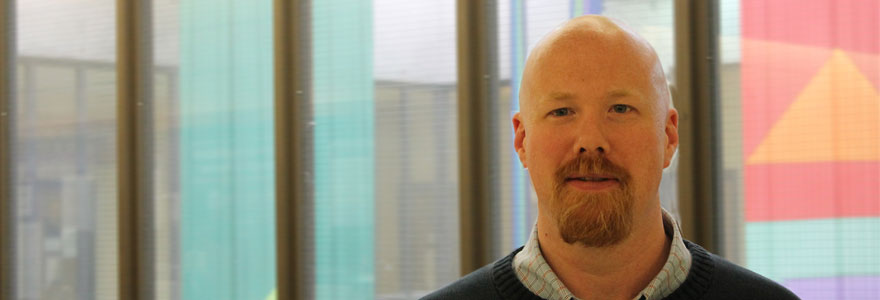News and Updates
Contact
Faculty of Social Science
Social Science Centre
Room 9438
Western University
T. 519-661-2053
F. 519-661-3868
E. social-science@uwo.ca
CRC to bring new tools to change social science research
May 03, 2018
Story and Picture by Rob Rombouts
How can new tools change social science research?
Dave Armstrong, Associate Professor in Political Science, has been named as Canada Research Chair in Political Methodology, with a focus on how to bring new research tools into social science.
A traditional quantitative approach in Social Science focuses on testing hypotheses in smaller group or sample and infers conclusions about the entire population from that information. These approaches, Armstrong says, are often seen as incompatible with new quantitative tools being developed by the data science community.
“There is a tension between models used for hypothesis testing and those used for prediction,” said Armstrong. His work will bridge this divide using both predictive and inferential models to their fullest advantage.
Methods being used on larger data sets allows for more predictive modelling, considering outcomes, without necessarily considering the causes or impact of various factors. “In predictive modelling, why a model works doesn’t matter, we just care about whether we can predict an outcome from it,” said Armstrong.
As an example, Armstrong said that a researcher might want to know how development in a country or region affects the likelihood of conflict.
“Are developed countries less prone to conflict? In the usual way, we collect a bunch of data in places with or without conflict and gather development data and other things that might impact development,” said Armstrong. “We put them into a model; focus on how development relates to probability of conflict.”
“In a predictive model, we may find development matters for conflict, but often times it is difficult to understand exactly how. Maybe the relationship deviates from what we thought,” said Armstrong. “The predictive model doesn’t care about nature of relationship, it just wants to know what is more predictive.”
Armstrong aims to merge the approaches; “The two approaches can be put together, to develop a good predictive model of conflict and better sense of impact of development on conflict, for example,” said Armstrong.
Armstrong’s goal is to determine the most profitable and successful uses of the new predictive model that can be incorporated into social science investigations.
Big data and predictive models provide an opportunity and a challenge for social scientists, said Armstrong. “There is opportunity to do something interesting,” said Armstrong. “There is also opportunity to misuse the predictive tools in work and expect them to do something they can’t do.”
Armstrong said some of the work to bring the two approaches together has already been completed in the study of statistics, but the challenge will be to convince people to use the new tools.
“Marrying these two approaches will give us more robust inferences,” said Armstrong. “It will help provide evidence that the answers we find are meaningful, and tell us something useful about the world.”

